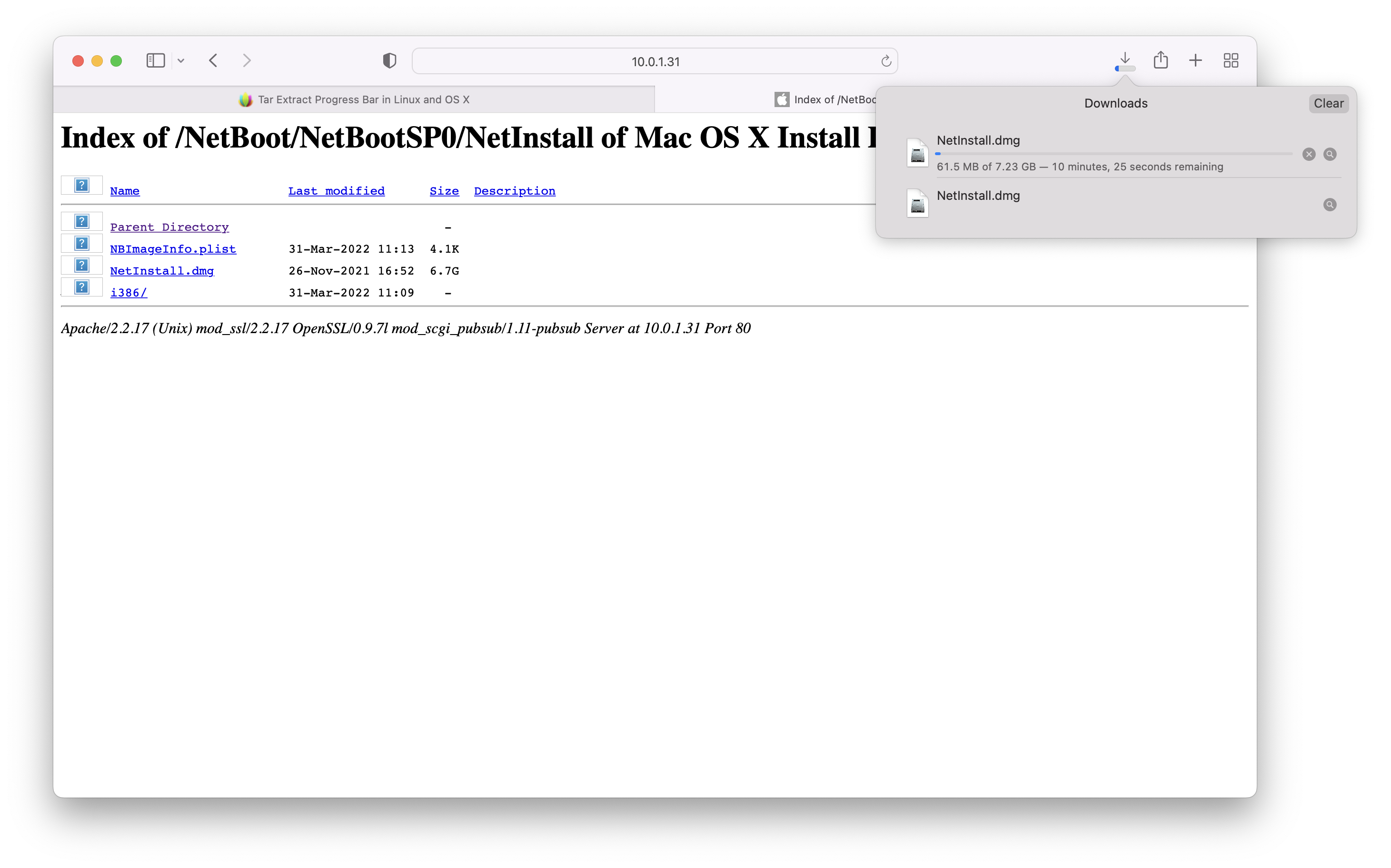For those of you interested in turn of the millennium computing and using old server operating systems: this page is about enabling HTTP transfer of NetBoot or NetInstall images to clients from Mac OS X Server Leopard.
The Problem
Mac OS X Server Leopard supports NetBoot with HTTP although NFS remains the default for any images with Mac OS X. It should be possible for Mac OS X Server Leopard systems to serve newer NetInstall images all the way up to macOS Mojave which is the last officially supported NetInstall macOS release. The advantage of using Mac OS X Server Leopard is that the old AFP implementation supports NetBoot of Pre Mac OS X systems like Mac OS 9 in addition to the newer images.
When you enable the NetBoot service with an HTTP image the Web service starts automatically but in the NetBoot Overview you may see a red dot beside HTTP:
Having done some diagnosis including attempting to download a NetInstall image I noticed that the .dmg file size was incorrectly displayed in the folder listing, and it downloaded a a zero byte file. It turns out that the Web service Apache version 1.3 cannot provide files larger than 2GB due to some 32bit inheritance. Fortunately this is easily corrected by using an included upgrade within the Mac OS X Server Leopard system to Apache 2.2, which it is important to note is irreversible.
The Solution
- Stop the NetBoot Service
- Go to the Web Service overview then click ‘Upgrade Apache Version…’

- When prompted change the Version radio button to ‘2.2’ followed by ‘Continue’


- Start the NetBoot service and this time you should get a green dot beside HTTP

- You can test this by starting a NetBoot client, and you can also verify correctly functioning large file downloads from your browser.

Final Notes
From what I can tell the need to upgrade to Apache 2.2 has not been documented by Apple, and this was not even mentioned in the training book.
You can run this server nicely in VirtualBox on a more modern Mac host, or on an old Apple Computer. There is no need to run this antiquated server if you don’t need to include the older AFP served images that were used before Mac OS X.




